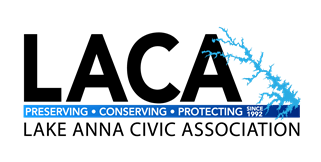To submit a HAB report or scum sighting, utilize the DEQ collected seven Lake Anna HAB samples on June 3rd. There were no HAB advisories issued - all seven stations (green 2025 VDH HAB Advisory Protocol Update HAB Advisories will be issued based on toxins Cell counts will no longer be used to issue an advisory The U.S. Environmental Protection Agency (EPA) has issued final recommended cyanotoxin criteria for swimming advisories for two hepatotoxins commonly detected in surface waters: microcystins (8 μg/L) and cylindrospermopsin (15 μg/L) which may be adopted as state water quality standards (EPA 2019). Additionally, anatoxin-a and saxitoxin are recognized by the EPA and the World Health Organization (WHO) as potent neurotoxins, but neither have US national health-based advisory recommendations at present (WHO 2003, EPA 2009, D’Anglada 2015). In the absence of EPA/WHO advisory levels for these toxins, several states have developed their own management strategies to protect against human and animal neurotoxin exposure, including Virginia in 2021. From 2021 to 2024, VDH utilized a hybrid advisory approach. Advisories were issued when either toxins or cell densities exceeded thresholds for four cyanotoxins (microcystins, cylindrospermopsin, anatoxin-a, saxitoxin) or for potentially toxigenic cyanobacteria cell densities. The hybrid approach was appropriate because of insufficient data on the prevalence of algal toxins and the relationship between cell densities and toxin concentrations. Following five years of data analysis of the four cyanotoxins alongside the potentially toxigenic cell densities, data supports the management of recreational advisories based on the cyanotoxins criteria, independent of cyanobacteria concentrations. Starting in 2025, HAB advisories will only be issued when one or more of the toxin tests conducted by the State Lab exceed thresholds established by VDH. DEQ/VDH HAB Adisory Protocol Update Notice (English version) DEQ/VDH HAB Adisory Protocol Update Notice (Spanish version) The Google Earth polygons used by the VDH to issue advisory areas are included in the .kmz file linked below: Please bookmark www.SwimHealthyVa.com site, and use this page to stay up to date on HAB updates. You can view the current status of HAB events throughout Virginia on VDH's HAB Dashboard. Report suspected HAB-related HEALTH complaint to the HAB Hotline 1-888-238-6154. All requests for HAB sampling updates received on the HAB hotline will be referred to the website. A few reminders on reporting and resources: To submit a HAB report or scum sighting, utilize the online report form. Citizen reports called “Crowd-Sourced Reports” are displayed on the VDH HAB Dashboard, represented by blue dots on the map. If you see what you suspect to be an algae bloom, please report it to the Virginia Department of Health, even if a Recreational Advisory is already in place near your property. Use the HAB Online Report Form and submit weekly updates with images to keep VDH up to date. A report must be based on current conditions - a report that documents a past condition (defined as greater than 48 hours in the past) will be rejected by VDH. Submit reports to VDH using the online reporting form within 24-48 hours of the algae bloom condition. Geographic coordinates are required when you submit a report. You can use Google Maps, or other mapping tools, to provide the latitude and longitude of the location. Also - and this is essential - include a picture of the algae/scum condition with your report. |
- Home
- VDH Recreational Advisories

